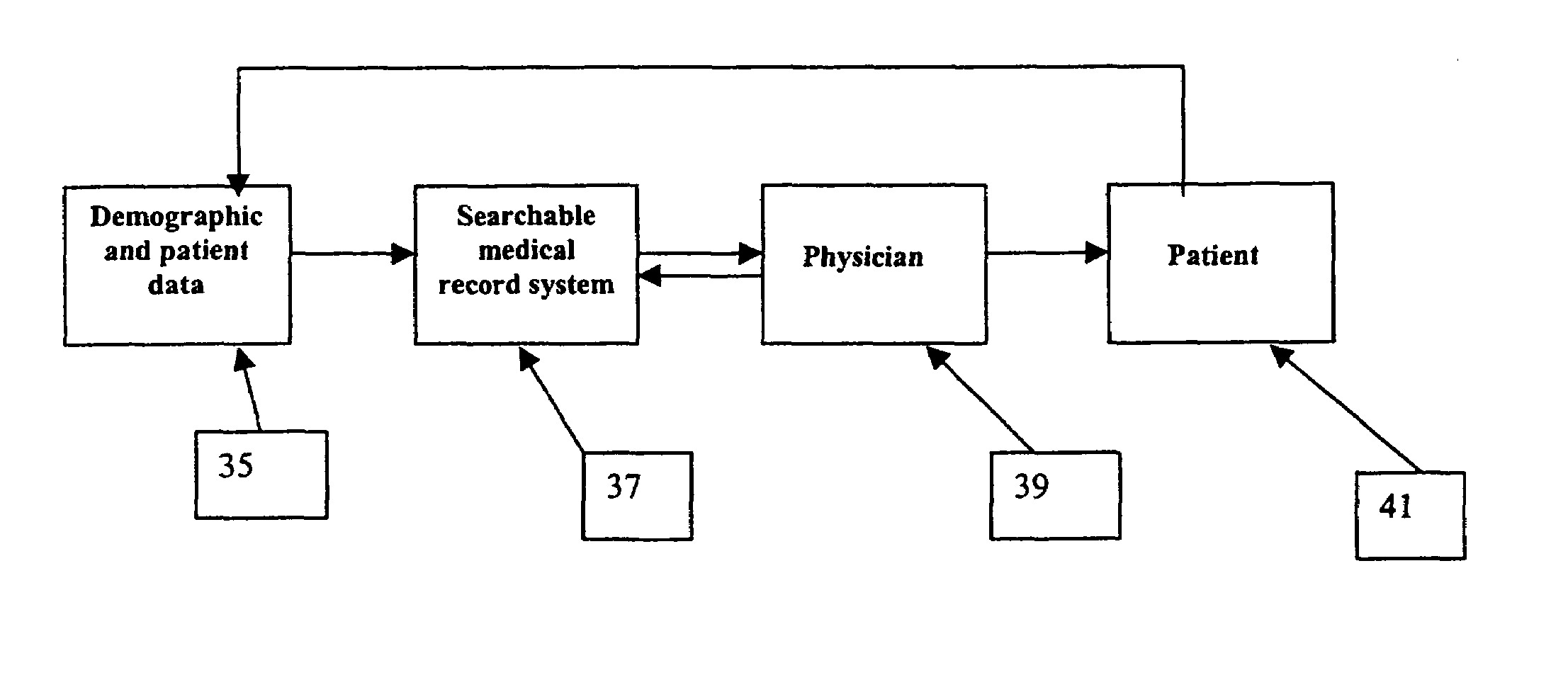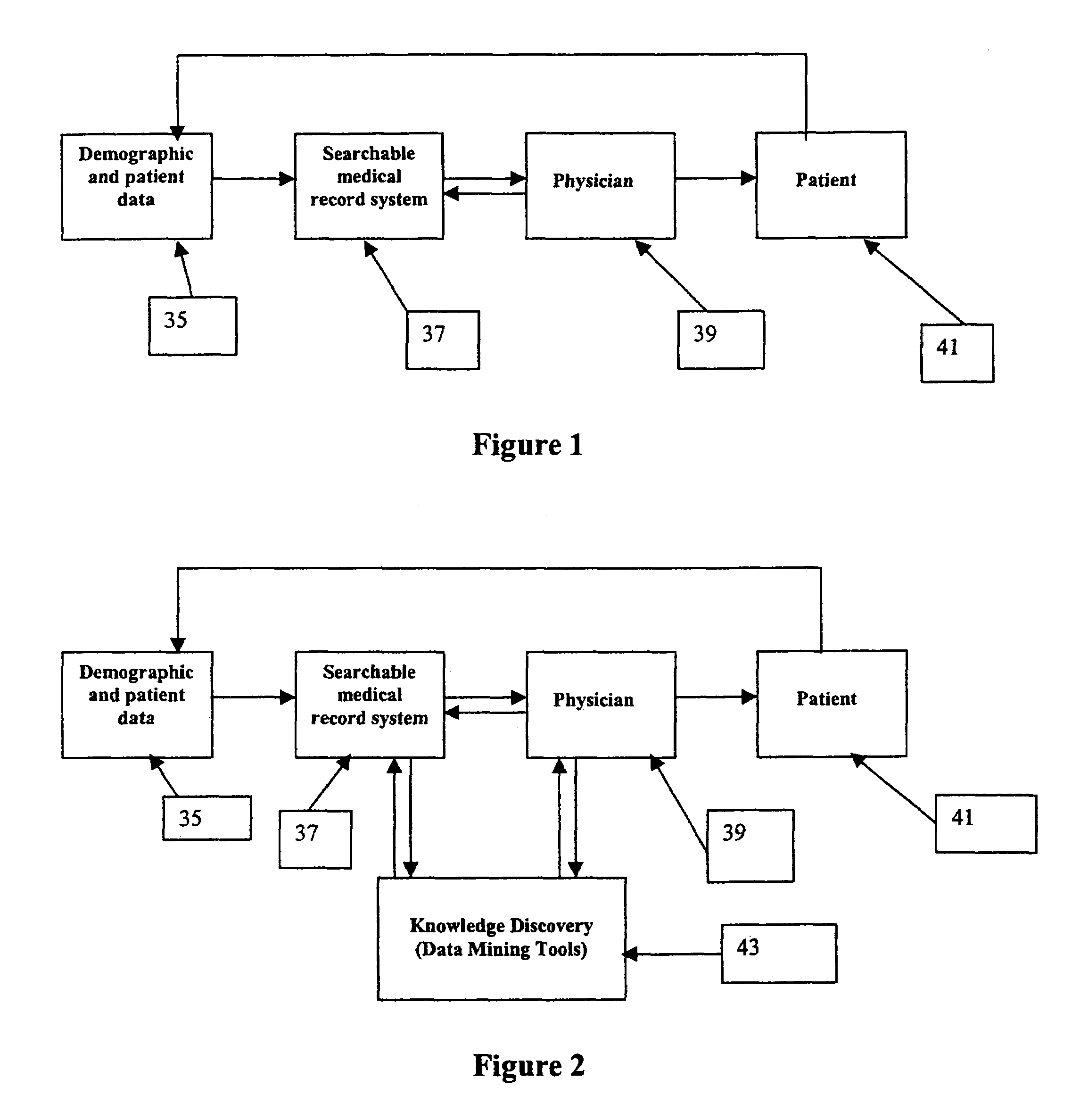Methods and kits for managing diagnosis and therapeutics of bacterial infections
a technology for bacterial infections and diagnostics, applied in the field of infection diagnosis and treatment, can solve the problems of not identifying the type of bacterium present or indicating, the method of treating patients without cultures or documentation has significant potential for complications, and the needless treatment of patients who do not have infections, etc., to enhance the efficacy of the previously disclosed diagnostic system, and improve the prediction of the pathogen encountered
- Summary
- Abstract
- Description
- Claims
- Application Information
AI Technical Summary
Benefits of technology
Problems solved by technology
Method used
Image
Examples
Embodiment Construction
[0044]The present invention provides medical records systems including means and methods for obtaining and comparing epidemiological, e.g., demographic, personal, and medical data concerning persons previously diagnosed and treated for infections with the same or similar data from a particular, previously undiagnosed, patient presenting with, i.e., having, the same or similar symptoms of infection. The present invention thus allows prediction, or diagnosis, for the particular patient, of the most likely pathogen to the causative agent of the infection and prediction, or prescribing, of an effective treatment for the infection. The diagnosis and prescription may preferably be done for the patient prior to, or in the absence of, obtaining a sample, and analyzing the sample, from the particular patient. For simplicity, the phrase “prior to” will be understood to include “in the absence of” hereinafter unless otherwise indicated.
[0045]An exemplary embodiment of the present invention com...
PUM
 Login to View More
Login to View More Abstract
Description
Claims
Application Information
 Login to View More
Login to View More - R&D
- Intellectual Property
- Life Sciences
- Materials
- Tech Scout
- Unparalleled Data Quality
- Higher Quality Content
- 60% Fewer Hallucinations
Browse by: Latest US Patents, China's latest patents, Technical Efficacy Thesaurus, Application Domain, Technology Topic, Popular Technical Reports.
© 2025 PatSnap. All rights reserved.Legal|Privacy policy|Modern Slavery Act Transparency Statement|Sitemap|About US| Contact US: help@patsnap.com



